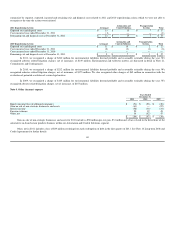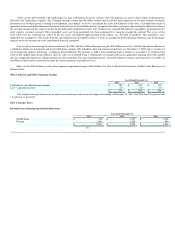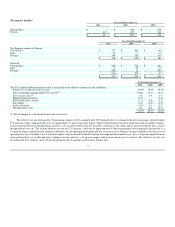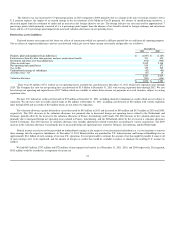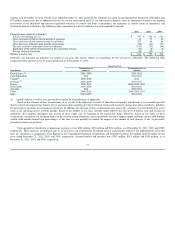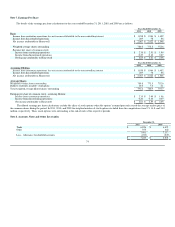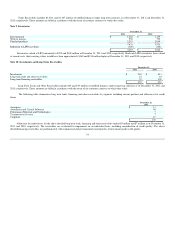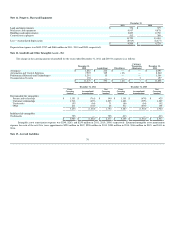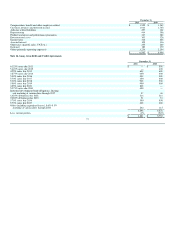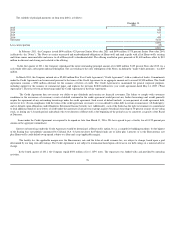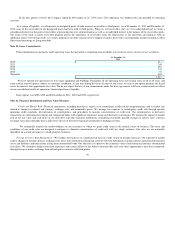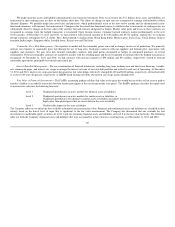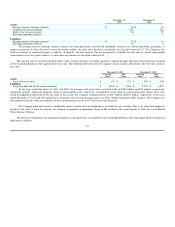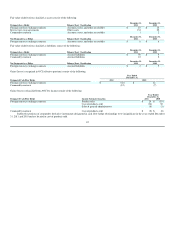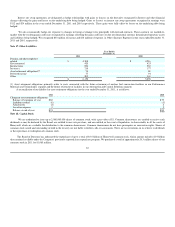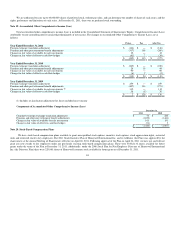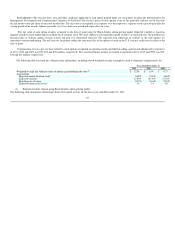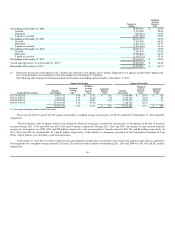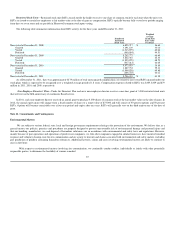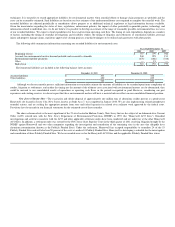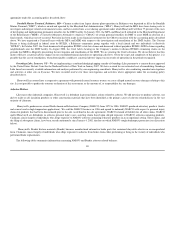Honeywell 2011 Annual Report Download - page 82
Download and view the complete annual report
Please find page 82 of the 2011 Honeywell annual report below. You can navigate through the pages in the report by either clicking on the pages listed below, or by using the keyword search tool below to find specific information within the annual report.
In the first quarter of 2010, the Company repaid $1,000 million of its 7.50% notes. The repayment was funded with cash provided by operating
activities.
As a source of liquidity, we sell interests in designated pools of trade accounts receivables to third parties. As of December 31, 2011 and December 31,
2010, none of the receivables in the designated pools had been sold to third parties. When we sell receivables, they are over-collateralized and we retain a
subordinated interest in the pool of receivables representing that over-collateralization as well as an undivided interest in the balance of the receivables pools.
The terms of the trade accounts receivable program permit the repurchase of receivables from the third parties at our discretion, providing us with an
additional source of revolving credit. As a result, program receivables remain on the Company's balance sheet with a corresponding amount recorded as either
Short-term borrowings or Long-term debt.
Note 15. Lease Commitments
Future minimum lease payments under operating leases having initial or remaining noncancellable lease terms in excess of one year are as follows:
At December 31,
2011
2012 $ 311
2013 248
2014 184
2015 135
2016 92
Thereafter 243
$ 1,213
We have entered into agreements to lease land, equipment and buildings. Principally all our operating leases have initial terms of up to 25 years, and
some contain renewal options subject to customary conditions. At any time during the terms of some of our leases, we may at our option purchase the leased
assets for amounts that approximate fair value. We do not expect that any of our commitments under the lease agreements will have a material adverse effect
on our consolidated results of operations, financial position or liquidity.
Rent expense was $386, $369 and $366 million in 2011, 2010 and 2009, respectively.
Note 16. Financial Instruments and Fair Value Measures
Credit and Market Risk—Financial instruments, including derivatives, expose us to counterparty credit risk for nonperformance and to market risk
related to changes in interest and currency exchange rates and commodity prices. We manage our exposure to counterparty credit risk through specific
minimum credit standards, diversification of counterparties, and procedures to monitor concentrations of credit risk. Our counterparties in derivative
transactions are substantial investment and commercial banks with significant experience using such derivative instruments. We monitor the impact of market
risk on the fair value and cash flows of our derivative and other financial instruments considering reasonably possible changes in interest rates, currency
exchange rates and commodity prices and restrict the use of derivative financial instruments to hedging activities.
We continually monitor the creditworthiness of our customers to which we grant credit terms in the normal course of business. The terms and
conditions of our credit sales are designed to mitigate or eliminate concentrations of credit risk with any single customer. Our sales are not materially
dependent on a single customer or a small group of customers.
Foreign Currency Risk Management—We conduct our business on a multinational basis in a wide variety of foreign currencies. Our exposure to market
risk for changes in foreign currency exchange rates arises from international financing activities between subsidiaries, foreign currency denominated monetary
assets and liabilities and transactions arising from international trade. Our objective is to preserve the economic value of non-functional currency denominated
cash flows. We attempt to hedge transaction exposures with natural offsets to the fullest extent possible and, once these opportunities have been exhausted,
through foreign currency exchange forward and option contracts with third parties.
79


